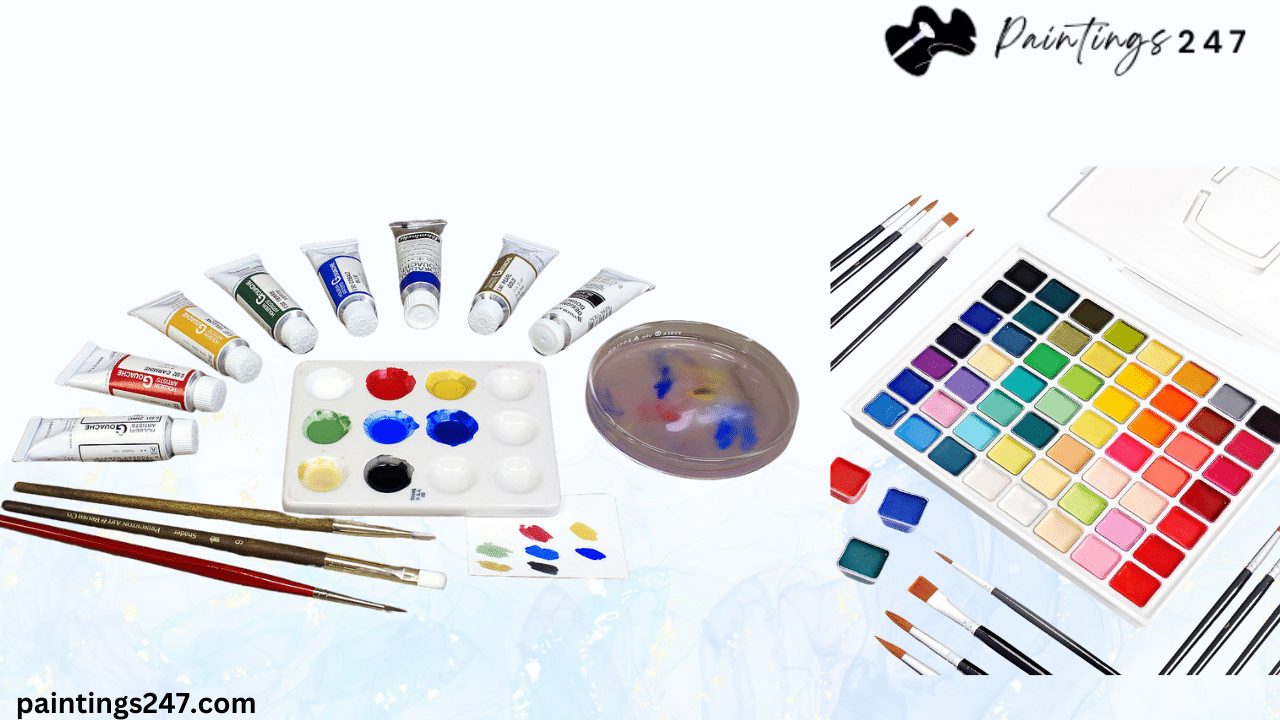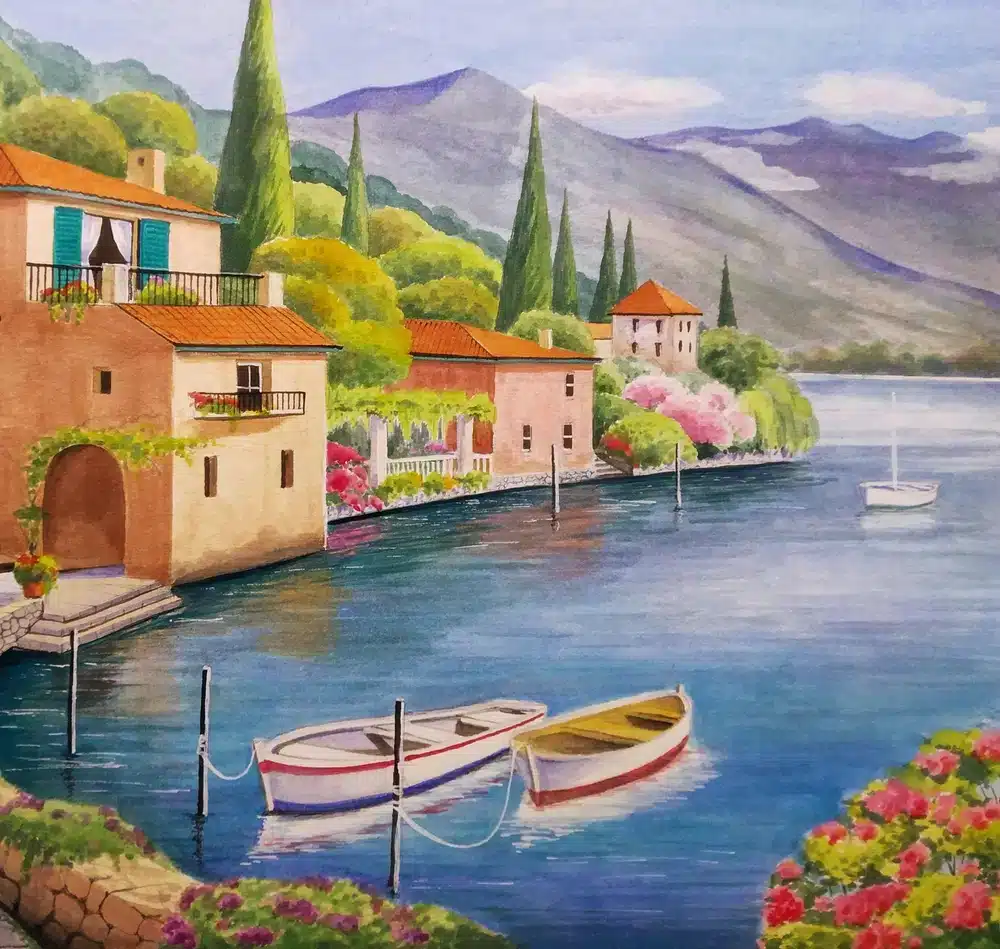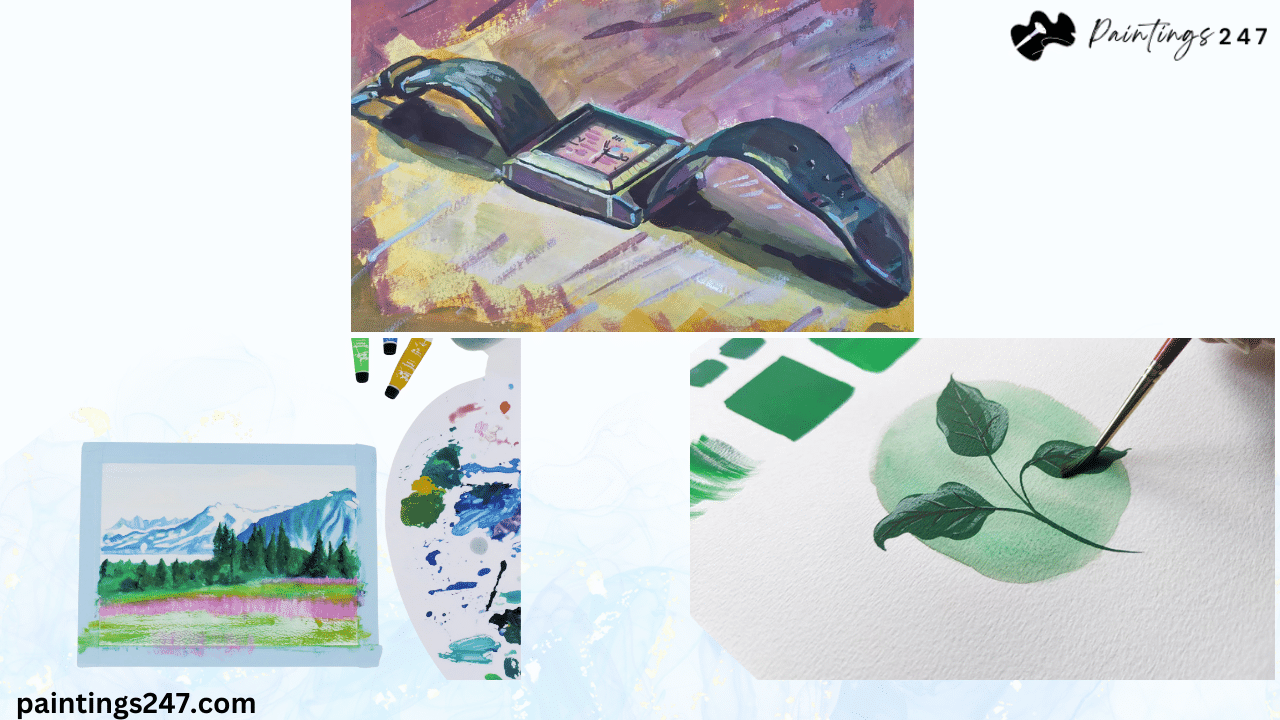Gouache painting is a captivating art form that combines the best of watercolor and acrylic techniques. A blend that combines the fluidity of watercolor with the opacity of acrylic, known for its opaque quality and vibrant colors, gouache offers a unique experience for artists seeking to explore a versatile medium. Gouache painting offers a versatile art medium that many artists love painting with due to its unique qualities. If you’re looking to master gouache painting, here are some essential tips to get you started.
What is Gouache Paint?
Gouache is a water-soluble paint known for its opaque finish and vibrant colors. Unlike acrylic paint or oil, which can have different properties, gouache stands out for its ability to be used as a wet gouache and in dry brush techniques. Working with gouache involves understanding how it interacts with water and other materials.
Key Supplies and Techniques

To get the most out of gouache paint, you’ll need some specific supplies and techniques:
Gouache Color
Choose high-quality gouache colors like Winsor Newton, known for their rich pigments and consistency.
Watercolor Paper
Use watercolor paper to handle the water-soluble nature of gouache. This type of paper is designed to hold up to the water content of gouache and prevent warping.
Wet Brush
When adding water to your gouache, mix and apply the paint with a wet brush. This helps in achieving the desired consistency and ensures smooth application.
Gum Arabic
Consider using gum Arabic to increase the gloss and transparency of your paint. This can be especially useful if you’re incorporating mixed media techniques.
Characteristics of Gouache
Gouache is a water-based paint that provides opaque coverage and a matte finish. Unlike transparent watercolors, gouache’s opacity allows artists to layer colors without the underlying layers showing through. This makes it ideal for vivid, bold compositions and fine details.
Gouache Painting Guide

Choose the Right Brushes
For gouache painting, use synthetic paint brushes that can handle the thicker consistency of the paint. Flat brushes are excellent for broad strokes and washes, while round brushes work well for detailed work. Ensure your brushes have sturdy bristles to avoid losing their shape under the heavier paint.
Prepare Your Painting Surface
Gouache can be applied to various surfaces, but watercolor paper or mixed-media paper is often recommended. These surfaces can handle the wet and dry layers of gouache without warping or peeling. If using a canvas, consider applying a gesso primer to create a suitable texture for the paint.
Mix Colors Properly
Gouache paints are known for their vibrant colors, but achieving the desired hues requires proper mixing. Use a palette to mix your gouache colors thoroughly, and add water gradually to reach the right consistency. Keep in mind that gouache can dry darker or lighter than it appears when wet.
Control the Consistency
Gouache paint can be used in various consistencies, from thin washes to thick, creamy layers. Adjust the amount of water to achieve the desired effect. For more opaque layers, use less water, and for translucent effects, add more water.
Layer Your Paint
One of gouache’s strengths is its ability to be layered. Start painting with a base layer and allow it to dry before adding additional layers. Therefore, this technique is useful for building depth and creating textures. Remember to use a dry brush technique to avoid disturbing the underlying layers.
Experiment with Blending
Gouache can be blended easily when wet, allowing for smooth transitions and gradients. Use a clean brush or a damp sponge to blend colors while they are still wet. For a more controlled blend, use a technique called feathering, where you gradually mix colors with a light touch.
Protect Your Work
Gouache can be sensitive to moisture even after it dries. To protect your finished work, consider using a fixative spray or frame your painting under glass. Also, avoid placing your artwork in direct sunlight or high humidity to prevent any potential damage.
Practice Clean Up
Gouache paint is easy to clean up with water, but it’s essential to wash your brushes and palette thoroughly after each session. Dried gouache can be challenging to remove, so clean your tools while the paint is still wet to ensure they remain in good condition.
Gouache Vs. Acrylic Paint
Here’s a table summarizing the key differences between gouache and acrylic paints.
| Feature | Gouache Paint | Acrylic Paint |
|---|---|---|
| Finish | Matte | Glossy or semi-gloss |
| Opacity | Opaque reactivates with water | Opaque cannot be reactivated |
| Drying Time | Quick, but reworkable with water | Quick, permanent once dry |
| Layering | Layers can reactivate | Layers dry permanently |
| Surface | Best on paper | Works on canvas, wood, paper, etc. |
| Durability | Less durable, can crack | Highly durable and water-resistant |
| Cleaning | Easy with water | Must clean brushes immediately |
Different Gouache Painting Techniques

Furthermore, Gouache offers a wide range of techniques with which to experiment. Try dry brushing for a textured effect, splattering for added interest, or masking fluid to reserve areas of white or to create crisp edges. Also, experimenting with different techniques will help you discover the full potential of gouache painting.
Flat Wash
Apply a smooth, even layer of diluted gouache to cover large areas. This creates a uniform background or base layer.
Glazing
Apply a thin, transparent layer of gouache over a dried base layer to add depth and adjust color without affecting the underlying layer.
Layering
Build up colors in successive layers, allowing each layer to dry before applying the next. Additionally, this technique is useful for creating depth and texture.
Wet-on-Wet
Apply gouache onto a wet surface to blend colors seamlessly and create soft transitions and gradients.
Dry Brush
Use a dry brush with minimal paint to create textured effects and fine details. Therefore, this technique adds dimension and interest to your painting.
Scumbling
Lightly drag a dry brush with a small amount of paint across a dry surface to create a textured, broken color effect.
Lifting
While the paint is still wet, use a clean, damp brush or sponge to lift off some of the paint, creating highlights or correcting mistakes.
Splattering
Flick or tap a brush loaded with gouache to create random, textured patterns and add visual interest to your artwork.
Masking Fluid
Apply masking fluid to areas you want to protect from paint. Once the gouache is dry, remove the masking fluid to reveal crisp, clean edges.
Dry Brush Stippling
Use a dry brush with a stippling motion to create a dotted texture, ideal for adding detail and dimension to your painting.
Experimenting with these techniques will help you master gouache and enhance your artistic expression.
Conclusion
Whether you’re an experienced artist or just getting started with gouache, incorporating these tips and tricks into your practice will help you master this versatile art medium. Embrace the unique properties of gouache and explore its full potential in your art. Happy painting.

